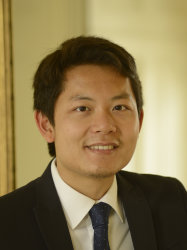BibTex format
@article{Brandt:2017:10.1021/acs.chemmater.6b05496,
author = {Brandt, RE and Poindexter, JR and Gorai, P and Kurchin, RC and Hoye, RLZ and Nienhaus, L and Wilson, MWB and Polizzotti, JA and Sereika, R and altauskas, R and Lee, LC and MacManus-Driscoll, JL and Bawendi, M and Stevanovi, V and Buonassisi, T},
doi = {10.1021/acs.chemmater.6b05496},
journal = {Chemistry of Materials},
pages = {4667--4674},
title = {Searching for “Defect-Tolerant” Photovoltaic Materials: Combined Theoretical and Experimental Screening},
url = {http://dx.doi.org/10.1021/acs.chemmater.6b05496},
volume = {29},
year = {2017}
}

